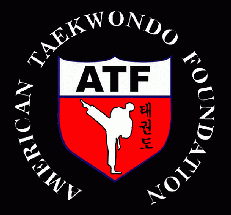
 |
Click on banner to go back to Rules
page
One
Step Sparring / Free
Sparring No rule
inquires made to this site will be answered, One Step
Sparring 1) White, Yellow, and Orange belt competitors will
perform one step sparring instead of free sparring against
opponents at tournaments. 2) matches will be run just like free sparring
divisions and will utilise the same bye system. 3) Competitors will execute 3 different one steps
within a match and will be scored after each one step. There is no
time limit on one step competition. 4) Judges will base superiority decisions on the same
criteria as in the form competition. 5) After each one step has been executed by each
competitor, judges will raise the appropriate flag of of the
competitor that they feel has executed the superior one step. The
winner will advance to the next round just like the free
sparring competition. This is done until the overall winner is
determined. Free
Sparring 1) safety
equipment is mandatory for all competitors. The required safety
equipment for ATF tournaments include: 2) The
position of the officials and competitors in a sparing
ring:
Time Keeper /
Score Keeper
3) A match
consists of one round which is two minutes in length. The time is
continuous does not stop when calling points. The first competitor
to reach five points or the competitor who is ahead in points at
the end of the 2 minutes is declared the winner. In the event of a
tie in score, the next point scored will win the match, under
sudden victory. 4) Target
Areas: The front and sides of the body above the belt are a legal
area for both hand and foot attacks. 5)
Number of points
awarded:
1
point A
controlled
hand or foot technique to the
body. 2
points A controlled foot technique to the
head. 2
points A
controlled
jumping foot technique to the body.
3
points A
controlled
jumping foot technique to the
head. Point Judge will
hold up colored flag with on hand and use the other
hand to indicate the number of points to be
awarded. No
Point Judge will
cross fists at the belt level. No
See Judge will
cover eyes with crossed hands Warning Judge will
wave the appropriate colored flag low towards the
floor. 8) Whenever a
judge sees a rule violation, he/she will yell "Warning!" The center judge will regroup the competitors and
call for warnings. ( The center judge may have to stop time if
necessary) The center judge will then call for points. 9) Warnings, point deductions and disqualification's
may result from the following:
11) If a warning and a point are called at the same
time, the warning is called first and then for points. A
competitor cannot receive a warning and then receive a point on
the same call. 12) A competitor who is out of bounds cannot score with
a technique until he/she has moved back in bounds. A
competitor who is out of bounds; however, can be scored upon by
the opponent who is still in bounds. One foot has
to be in bounds in order to score a point with a
kick. The attacker
must have left the ring in bounds with the kick
scoring be fore the attacker touches the
ground. No punches
may be scored if any foot is out of
bounds.
Tom Dreilinger, Luckystar Education, American
TaeKwonDo Foundation, Chungs TaeKwonDo, assumes no liability
for damages incurred directly or indirectly as a result of
errors, omissions or discrepancies.
Tom Dreilinger, Luckystar Education, American
TaeKwonDo Foundation, Chungs TaeKwonDo, is not responsible
for the content, nor endorses any site which has a link from
this page.
This page was updated 04/16/10

Please direct
questions to your Instructor.
Safety Kicks, Safety Punches, Headgear, and a
protective cup for male competitors. Other safety gear is recommended but not
required.
The safety equipment used must be of the foam type
and must be red
in color
Ring Sizes : 12' x 12' , 15' x 15' , 18' x 18'
6) Judges
can give the following signal during a match:
7)
Whenever a judge sees a point scored, he/she will yell
"Point!" or "Break!"
the center judge will then regroup the competitors and call for
points. It's important to note that any of these three judges can
call for points at any time during a match.
10) The
1st infraction of a rule will result in a warning. The
2nd infraction will result in a point awarded to the
other opponent. The 3rd
infraction will result in a disqualification of the competitor.
The only exception to this procedure is a hand attack to the head
which will result in a point being awarded to the other competitor
at the 1st infraction.

American
TaeKwonDo
Foundation
If
you wish to contact GM
Y.S. Chung
please contact him through his contact
information.
Web
Master Tom Dreilinger
Hosting Provided by Luckystar Education (C..2015)
This web
site is maintained by Tom Dreilinger for the American
TaeKwonDo Foundation. The information contained within this
site was valid at the time of posting.